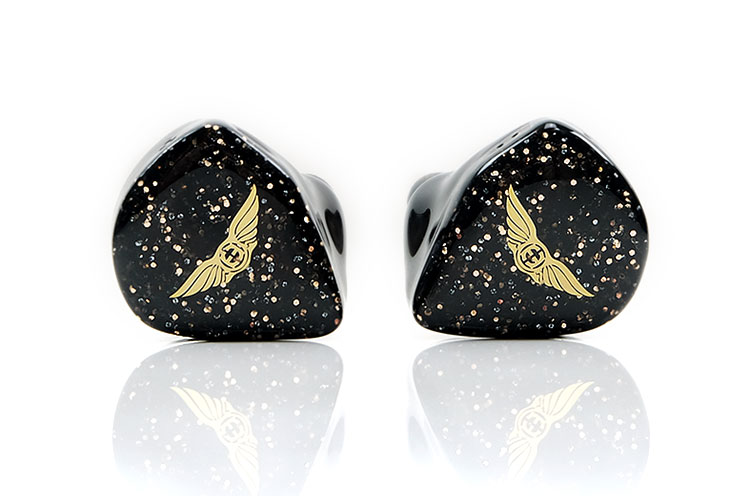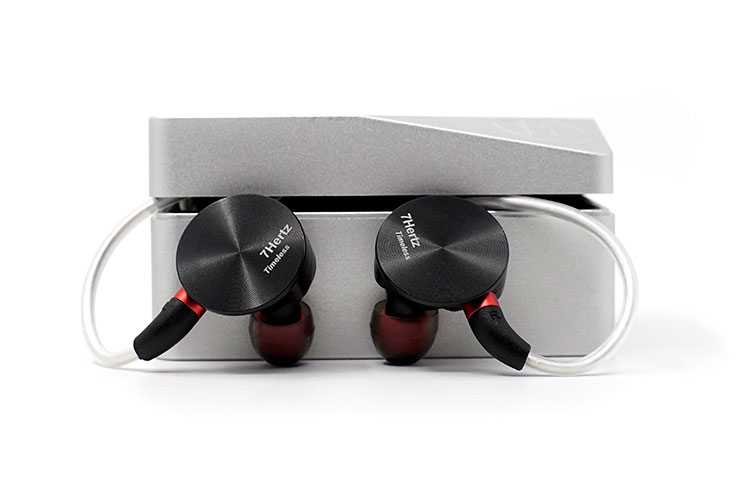
In this post, we review the Oriolus Szalayi, a hybrid universal in-ear monitor featuring a single dynamic, single BA, and a planar driver design. It is priced at $890.
Disclaimer: This is a sample unit sent to us in exchange for our honest opinion. Headfonics is an independent website with no affiliate links or status. We thank Oriolus for this opportunity.
You can click here to learn more about the Oriolus products we have previously featured on Headfonics.
Note, that this article follows our latest scoring guidelines which you can read here.
Planar IEMs have been a hot topic ever since the release of the 7Hz Timeless which brought the technology down to much more affordable levels than previously seen. Since then, various companies have been giving their best shot at creating a product that utilizes planar drivers to give it that distinct and alluring planar-like sound.
The latest contender has arrived on the scene: the Szalayi. It’s made by a company we all know well which has a significant footprint in the IEM world: Oriolus. However, Oriolus has gone even one step further and made an IEM that blends a planar driver with a balanced armature and dynamic driver.
The most interesting part? Well, clearly, it’s Szalayi’s price. It does not sit in the realms of other Oriolus products such as the Traillii which is priced at $6,600 but lies significantly lower. But how successful can this type of driver composition end up being? Has Oriolus really broken new ground with the Szalayi? Read on to find out.
Tech Highlights
The technology inside the Oriolus Szalayi is a bit unusual. For a change, we move away from Oriolus’ standard driver configuration of mostly balanced armature-based IEMs to one which houses 1 dynamic driver, 1 balanced armature, and 1 planar driver.
“Interesting” is probably an understatement here as this combination has been rarely seen in the IEM realm thus far. The 10mm dynamic driver is designed to handle the bass frequencies, whilst the planar driver deals with the mid-range and the balanced armature with the treble region.
The planar driver has a 14mm diameter with an ultra-thin diaphragm measuring at only 2 micrometers (2μm). The Szalayi also has an impedance of 10Ω and a sensitivity of 110dB so not that hard to drive.

Design
The Szalayi has an elegant and simple design. Each IEM shell comes in a 3D printed, royal blue color made from a photopolymer or light-activated resin. The inner part of each shell is coated with a thin layer of lacquer to give it a smooth and shiny appearance.
The faceplate features a light and dark blue glitter which reflects any incoming light to give it a sparkly look and feel. The words “Oriolus” are written in gold letters and sit towards the top of each faceplate.
At the bottom of each faceplate, you will find a single, circular vent or exhaust which allows air to escape during use and to alleviate any unnecessary pressure built up inside the IEM shell. The Szalayi has a short and wide nozzle which is like other IEMs offered by Oriolus such as the Traillii.
Comfort & Isolation
The Szalayi’s IEM shells are large however they are lightweight and have an ergonomic shape. However, the inner part of the IEM has a “bump” just above the start of the nozzle. For me personally, this bump did not pose any discomfort.
In fact, they were very comfortable and could be worn for hours. However, the bump present on the inner part of the shells is something that may pose an issue for those with smaller ears.
The combination of the short nozzle and stock tips provided are crucial elements in achieving a perfect seal and comfortable fit. This leads to very effective sound isolation where there were no instances of unwanted sound leaking out or coming in.
Tips
The Szalayi comes with a generous offering of silicone and foam stock ear tips. The silicone ear tips are soft and smooth and come in small to large sizes whereas the foam tips come in small and medium sizes only.
As a bonus, a pair of medium-sized, dual-flange, silicone ear tips are included. These basically look like 2 ear tips stacked on top of each other to form one large ear tip for each side.

Stock Cable
The stock cable provided with the Szalayi is very soft, supple, and so well made that it makes it the best-included feature apart from the IEM itself. This is a 4-wire, silver-plated, high-grade pure OFC (Oxygen Free Copper) cable with a 4.4mm termination.
The cable jacket features a soft nylon finish in a jet-black color. The braiding on the cable is exquisitely done with the perfect amount of tension so that the cable does not split apart easily and is always able to retain its shape.
The 4.4mm plug itself is cased in a silver metal barrel. The Y split is small and has a silver metal finish like the plug casing. The cable has a 2pin connector system which is encased in a bright silver, cylinder barrel at each end of the cable.

Packaging & Accessories
The Szalayi comes in a white, rectangular box that is fitted with a silver sleeve. The packaging is small and compact and Oriolus has made the most of the available space. The silver sleeve has a nice metallic color to it with a bird and the words Oriolus printed on the front in purple writing.
Inside the box, you will find the IEMs, cable, ear tips, cable clip, and warranty card. The warranty lasts a staggering 5 years, which should be more than sufficient.
Up until this point, I thought it was too good to be true and I was correct. The main pain point to Szalayi’s accessories is the lack of a provided IEM case.
At $890, one would expect an IEM case and, at the bare minimum, a carrying pouch. It simply confuses me to think that Oriolus did not provide an IEM case or pouch to protect a set of IEMs of this caliber and within this price range.
Sound Impressions
Note, all sound impressions and comparisons were made with stock ear tips and cable with the Cayin N8ii as the primary source.
Summary
The Szalayi has a sound signature that is focused on delivering a thunderous bass response with a clear mid-range, expansive soundstage, and excellent layering.
It strays away from Oriolus’ traditional IEM tuning philosophy which is centered predominantly around vocal clarity.
Hence, the Szalayi is built for those seeking pulsating and energetic tuning and finds an exceptional tonal balance between large amounts of bass which does not interfere too much with the mid-range. Bass heads will rejoice and find themselves right at home with the Szalayi.
Overall, the Szalayi has a significantly emphasized and very forward mid-bass coupled with an equally forward lower mid-range. The upper mid-range sits slightly behind the lower mid-range. The Treble comes off with a hint of sparkle with decent extension. The soundstage is very wide and tall which is coupled with excellent imaging and layering.
Bass
The sub-bass and mid-bass are heavily emphasized on the Szalayi and are supported by the 10mm dynamic driver. The sub-bass digs deep and produces thunderous amounts of rumble when called upon.
The mid-bass is very forward in the overall sound signature and sits in line with the lower mid-range. It slams hard, and I mean very hard. It has a “boomy” effect to it and is slow to decay.
Amongst all of this, the mid-bass has excellent texturing and resolution. Given the large sub and mid-bass presence, the overall bass response can come off as very pronounced in the overall sound response.

Mids
The mid-range is an area in which the Szalayi excels, especially with the large presence of the mid-bass in the overall tuning. Somehow, the Szalayi manages to mitigate the mid-bass presence diluting the sound too much, and hence it does not allow it to interfere with the overall clarity of the mid-range.
The lower mid-range is very forward in the overall sound signature and sits in line with the mid-bass. The upper mid-range sits slightly behind the lower mid-range. The whole mid-range comes off as highly resolving with excellent detail retrieval.
The instruments and vocals sound lush, smooth, and natural. At this price point, the quality and coherency of the mid-range and bass response are excellent and something to admire. The Szalayi has a slightly warm timbre.
Treble
The Szalayi takes a back seat when it comes to the treble which is not as far forward or emphasized as the mid-bass and mid-range. Instead, the treble is presented in a manner to provide a good foundation for the upper sound frequencies with sufficient detail.
Hence, the treble on the Szalayi comes off with a hint of sparkle with a tendency towards neutral. Treble extension and quality are decent and the Szalayi does a great job with its overall treble presentation. During testing, there were no instances or issues relating to harshness or sibilance.
Staging
The soundstage on the Szalayi is very wide and tall and is presented in a manner that gives an overall 3D effect. Like the mid-range, the soundstage presentation is excellent and enriches the bass and mid-range.
Layering and imaging from the Szalayi are excellent with a high level of accuracy in that it creates multiple layers and plenty of space between instruments and vocals. Instruments and vocals are placed with pinpoint accuracy allowing for encapsulating and enveloping listening experience.

Synergy
Efficiency
The Szalayi is quite demanding and requires a decent amount of power to drive although it comes in with an impedance rating of 10 ohms and a sensitivity level of 110dB.
The Szalayi did benefit from additional voltage. Hence, with both the Cayin N8ii and Cayin N6ii Ti DAPs, the Cayin N8ii was the noticeably better pairing due to its P+ mode which allowed it to pump more power into the Szalayi thus producing a better overall sound.
USB-C dongles such as the Cayin RU6 also worked well and there was no hissing or background noise whilst the IEMs were in use with any sources during testing.
Pairings
The Szalayi paired well with all sources used during testing and fared better with a neutral DAP or source. This is because, without any further coloration, the bass and mid-range were able to perform at their full potential.
Thus, the Cayin N8ii was the most suitable source and best pairing. The pairing of the Szalayi and Cayin RU6, which leans towards a warm timbre, was an enjoyable pairing as the RU6 allowed the Szalayi to maintain its explosive mid-bass and highly resolving mid-range.

Select Comparisons
Empire Ears Bravado MKII
$799
Technical
The Empire Ears Bravado MKII features a tribrid design and houses 4 proprietary drivers: 1 dynamic or “Weapon IX+” driver, 1 balanced armature, and 2 electrostatic drivers.
The Bravado MK II has a 6-way synX Crossover Network. It has an impedance rating of 4 ohms and a sensitivity rating of 99dB. Interestingly, the Bravado MKII requires just as much power to drive compared to the Szalayi.
Design
The Bravado MK II features a jet-black resin shell with a “deep field” themed faceplate. The Bravado MKII is slightly bigger than the Szalayi and has a longer nozzle.
Cable-wise, the Bravado MKII comes with an Alpha IV 26 AWG UPOCC Litz Copper cable like the EA Ares II.
Performance
With regards to the sub and mid-bass, the Bravado MKII has a more forward presentation in both areas. As such, the sub-bass on the Bravado MKII digs deeper and produces more rumble.
Similarly, the mid-bass has more slam and is slower to decay. However, the mid-bass on the Szalayi has better control and texture compared to the Bravado MKII. In relation to the midrange, there is a noticeable difference between both IEMs.
The upper mid-range is much more forward on the Bravado MKII compared to the Szalayi which has a forward lower mid-range instead.
The Bravado MKII’s overall timbre comes off as much warmer compared to the Szalayi. As a result, Szalayi’s mid-range comes off as smoother, lusher, and more organic with a higher level of detail and resolution.
The Bravado MKII’s treble is much brighter and forward compared to the Szalayi which has a hint of sparkle. The treble on the Szalayi extends further with better texture compared to the Bravado MK II.
The soundstage on the Szalayi is wider and taller compared to the Bravado MKII which has a narrower and more intimate soundstage. Layering and imaging on the Szalayi are presented with better accuracy, space, and separation compared to the Bravado MKII which is a result of the wider and taller soundstage.

7Hz Timeless
$220
Technical
The one which started it all. The 7Hz Timeless IEM (Timeless) uses a single 14.2mm planar-based driver which is like the Szalayi as it also houses planar technology.
However, the Szalayi goes one step further and combines this with an additional dynamic driver and balanced armature which is missing in the Timeless. The 7Hz Timeless has an impedance of 14.8 ohms and 104dB sensitivity. However, during testing, the 7Hz Timeless was easier to drive than the Szalayi.
Design
The 7Hz Timeless has a unique design and its shells are made from aluminum. This is different from the Szalayi which is made from a photopolymer or light-activated resin.
The Timeless has a circular faceplate that is attached to a small nozzle. This makes it a bit harder to achieve a perfect fit compared to the Szalayi which has a traditional IEM structure where it is pre-molded to the inner shape of an ear.
Performance
The Szalayi presents its sub and mid-bass with more forwardness, rumble, and slam compared to the Timeless. Hence, the mid-bass on the Szalayi has more presence in the overall sound signature compared to the Timeless.
The Szalayi has the edge when it comes to mid-bass texturing and control. Regarding the mid-range, the timeless has a more forward upper midrange compared to the Szalayi which focuses more on the lower mid-range.
Both IEMs have a similar timbre which comes off as slightly warm. Hence, the mid-range on both IEMs is excellent however the Szalayi comes off with slightly better clarity and overall resolution compared to the Timeless.
The treble on the Timeless is brighter with more sparkle compared to Szalayi. Treble extension and quality are similar with no significant difference.
Soundstage between the Timeless and the Szalayi is similar however the Szalayi has more height. As such, the Szalayi has the edge when it comes to imaging and layering as it can utilize more space.

Our Verdict
Make no mistake, the Oriolus Szalayi is an impressive IEM. For bass heads, this is pure delight as it is capable of delivering a thunderous bass response with a clean and crisp mid-range.
Compared to other IEMs in the same price bracket, the Szalayi competes very well indeed whilst showcasing some very interesting driver blends.
Oriolus really stepped out of its comfort zone with this one as it moves away from its traditional balanced armature and vocal-based tuning philosophy to deliver a fun, energetic, and vibrant IEM.
Oriolus Szalayi Technical Specifications
- 1x BA Driver (Treble)
- 1x 10mm Dynamic Driver (Bass)
- 1x 14mm planar diaphragm driver (midrange/voices)
- 110dB/mW
- 10Hz~40kHz
- 10Ω Impedance
- High-grade pure OFC silver-plated cable with 4.4mm connector
- Silicone Ear tips(S M L 2-flange-M)
- Foam Ear tips(S M)
- cord clip
- cleaning tool
creditSource link






